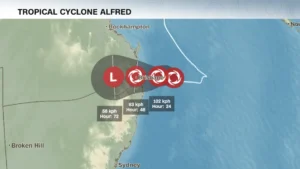If you’ve ever dreamt of harnessing the power of flowing water to generate electricity, you’re not alone. Micro-hydropower projects hold the promise of turning this dream into a reality. In this article, we’ll delve into the fascinating world of micro-hydropower and explore its feasibility, potential benefits, and the key considerations for successful implementation.
Introduction
Micro-hydropower projects have gained significant attention in recent years as a sustainable and renewable source of energy. This article aims to provide a comprehensive understanding of the feasibility of such projects and how they can turn the flowing streams into a source of dreams for communities and individuals alike.
Read for: Feasibility analysis of micro-hydropower project( a decentralised energy distribution system)
The Basics of Micro-Hydropower
Micro-hydropower: What is it? From Streams to Dreams: The Feasibility of Micro-Hydropower Projects Micro-hydropower, often referred to as small-scale hydropower, involves the use of flowing water, such as streams or rivers, to generate electricity. Unlike large hydroelectric dams, micro-hydropower projects are smaller in scale and can be implemented in various settings, making them an attractive option for sustainable energy generation.
The Key Components of Micro-Hydropower From Streams to Dreams: The Feasibility of Micro-Hydropower Projects Before delving into the feasibility of micro-hydropower projects, it’s essential to understand their key components. These include a water source (the stream or river), a turbine to convert water flow into mechanical energy, a generator to convert mechanical energy into electricity, and a distribution system to supply power to users.
Green and Renewable Energy
Micro-hydropower projects offer a green and renewable source of energy. By harnessing the power of flowing water, they produce minimal greenhouse gas emissions, making them an eco-friendly choice for electricity generation. Unlike fossil fuels, which contribute to climate change, micro-hydropower projects have a significantly lower carbon footprint, helping to reduce the overall environmental impact.
Energy Independence
One of the remarkable benefits of micro-hydropower is the potential for communities and individuals to achieve energy independence. With a reliable source of power from nearby streams or rivers, regions can reduce their reliance on non-renewable energy sources, such as coal or natural gas. This energy self-sufficiency not only reduces the carbon emissions associated with traditional energy generation but also enhances energy security by reducing vulnerability to supply disruptions or price fluctuations.
Low Operating Costs
Micro-hydropower projects are known for their low operating costs once they are up and running. Unlike fossil fuel-based power generation, which often involves expensive fuel procurement and maintenance, micro-hydropower relies on the continuous flow of water, which is both abundant and free. This characteristic makes micro-hydropower a cost-effective and sustainable energy solution in the long run.
The Feasibility of Micro-Hydropower
Assessing the Potential of Water Sources From Streams to Dreams: The Feasibility of Micro-Hydropower Projects The first step in determining the feasibility of a micro-hydropower project is assessing the available water source. The flow rate and head (the vertical distance the water falls) of the stream or river are crucial factors. A higher flow rate and head generally translate to greater energy generation potential.
Environmental Impact and Sustainability From Streams to Dreams: The Feasibility of Micro-Hydropower Projects One of the key advantages of micro-hydropower is its minimal environmental impact compared to large-scale hydroelectric projects. These smaller systems have a smaller footprint and are less disruptive to ecosystems, making them a sustainable choice for energy generation.
Financial Viability and Return on Investment (ROI) From Streams to Dreams: The Feasibility of Micro-Hydropower Projects While micro-hydropower projects can be a sustainable energy source, their financial feasibility is a critical consideration. Factors such as initial setup costs, ongoing maintenance, and potential government incentives should be evaluated to determine the project’s return on investment.
Advantages of Micro-Hydropower
Clean and Renewable Energy Source From Streams to Dreams: The Feasibility of Micro-Hydropower Projects Micro-hydropower projects offer a clean and renewable source of energy. They produce minimal greenhouse gas emissions and have a minimal environmental footprint, making them an eco-friendly choice for electricity generation.
Energy Independence and Reliability From Streams to Dreams: The Feasibility of Micro-Hydropower Projects One of the key advantages of micro-hydropower is the potential for communities to achieve energy independence. With a reliable source of power, regions can reduce their reliance on non-renewable energy sources and enhance their energy security.
Challenges and Considerations
Regulatory and Environmental Approvals From Streams to Dreams: The Feasibility of Micro-Hydropower Projects Implementing a micro-hydropower project often involves obtaining the necessary regulatory approvals and adhering to environmental regulations. This process can be complex and time-consuming, requiring careful planning and compliance.
Maintenance and Infrastructure From Streams to Dreams: The Feasibility of Micro-Hydropower Projects To ensure the long-term success of a micro-hydropower project, regular maintenance and infrastructure upkeep are essential. This includes monitoring the turbines, generators, and distribution systems to maximize efficiency and reliability.
FAQs
Q: What is the typical lifespan of a micro-hydropower project? A: The lifespan of a micro-hydropower project can vary, but with proper maintenance, it can last for several decades.
Q: Are there government incentives for micro-hydropower projects? A: Many governments offer incentives, grants, and tax benefits to promote the development of micro-hydropower projects.
Q: Can micro-hydropower projects be implemented in urban areas? A: While they are often associated with rural settings, micro-hydropower projects can be designed for urban areas, utilizing water sources like urban rivers or sewage systems.
Q: How much does it cost to set up a micro-hydropower project? A: The cost varies widely depending on factors like the water source, project scale, and local conditions. A comprehensive feasibility study is necessary to estimate costs accurately.
Q: Is micro-hydropower a reliable source of energy? A: Micro-hydropower is generally reliable, but its consistency depends on the flow rate and head of the water source.
Q: What is the environmental impact of micro-hydropower? A: Micro-hydropower projects have a significantly lower environmental impact compared to large-scale hydropower dams, as they are designed to minimize ecological disruption.
Conclusion
From Streams to Dreams: The Feasibility of Micro-Hydropower Projects Micro-hydropower projects offer a promising path toward sustainable, clean, and renewable energy generation. By harnessing the power of flowing streams, communities and individuals can reduce their carbon footprint and contribute to a greener future. While challenges exist, the feasibility of these projects is evident, and with careful planning and consideration, they can turn dreams into a reality.







